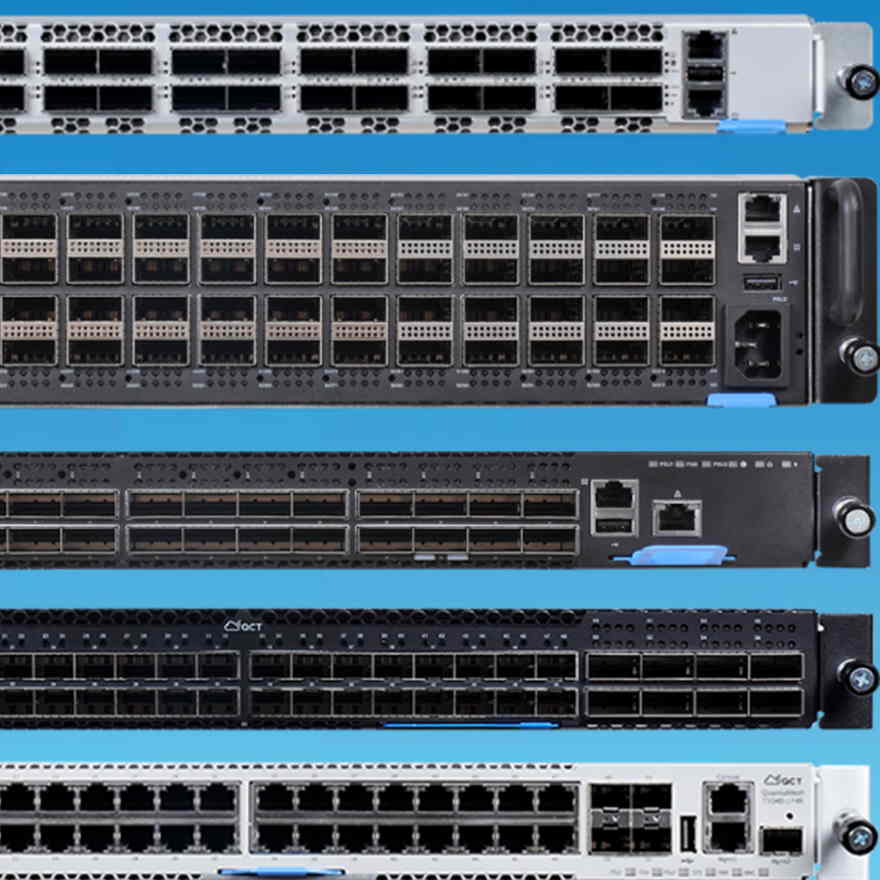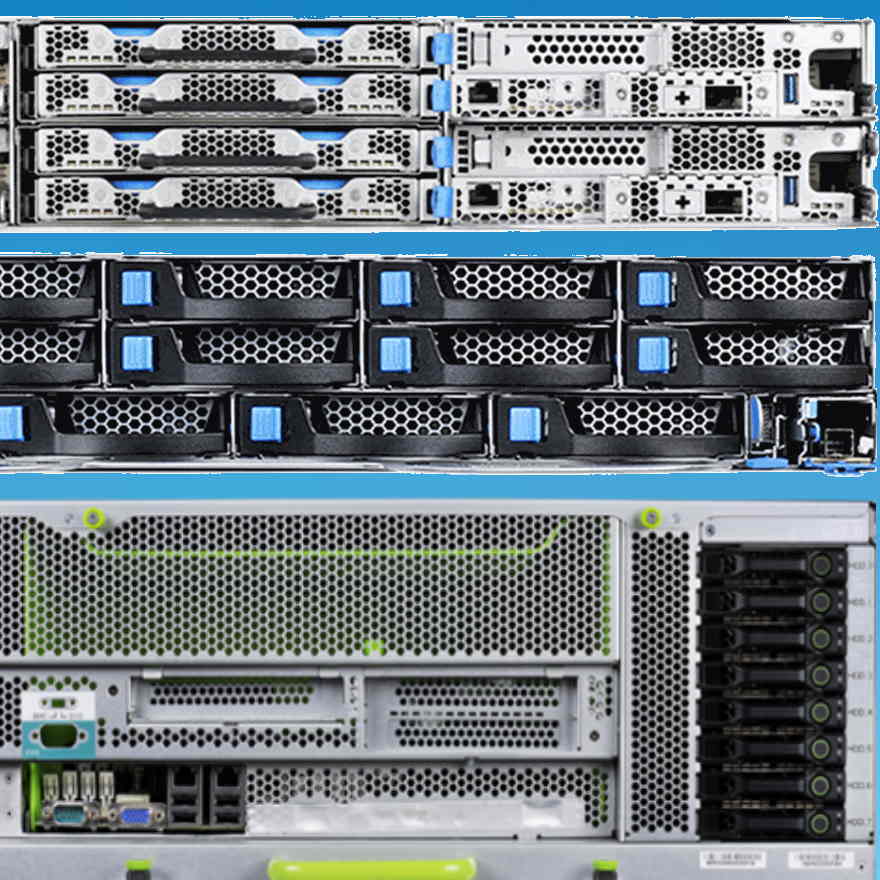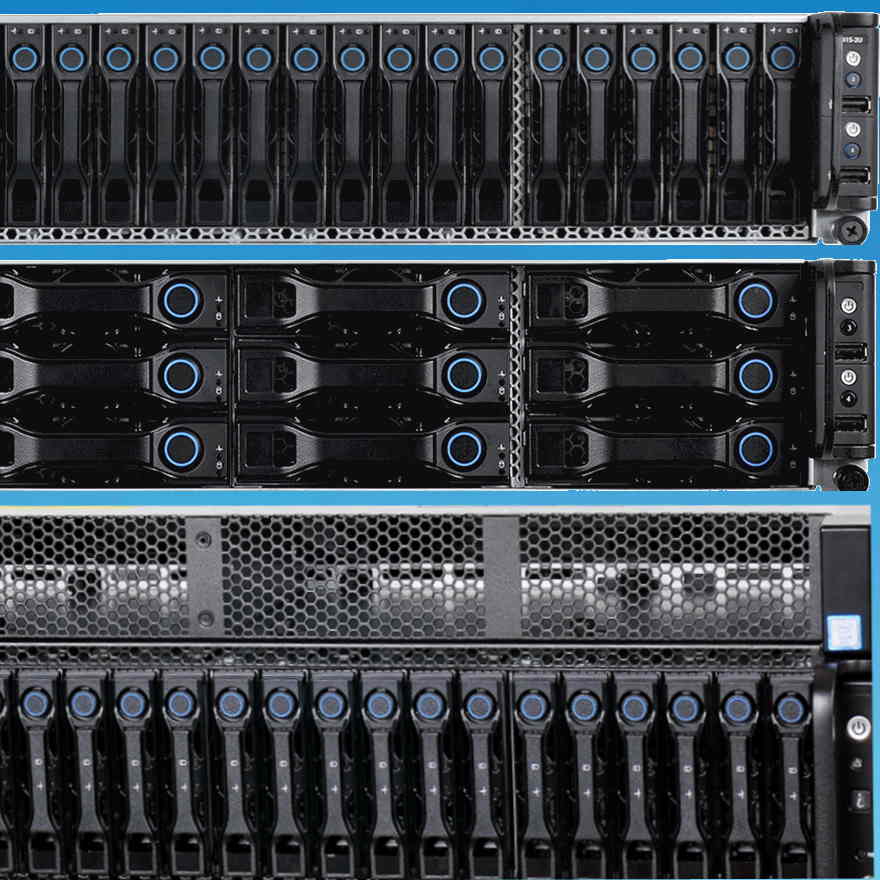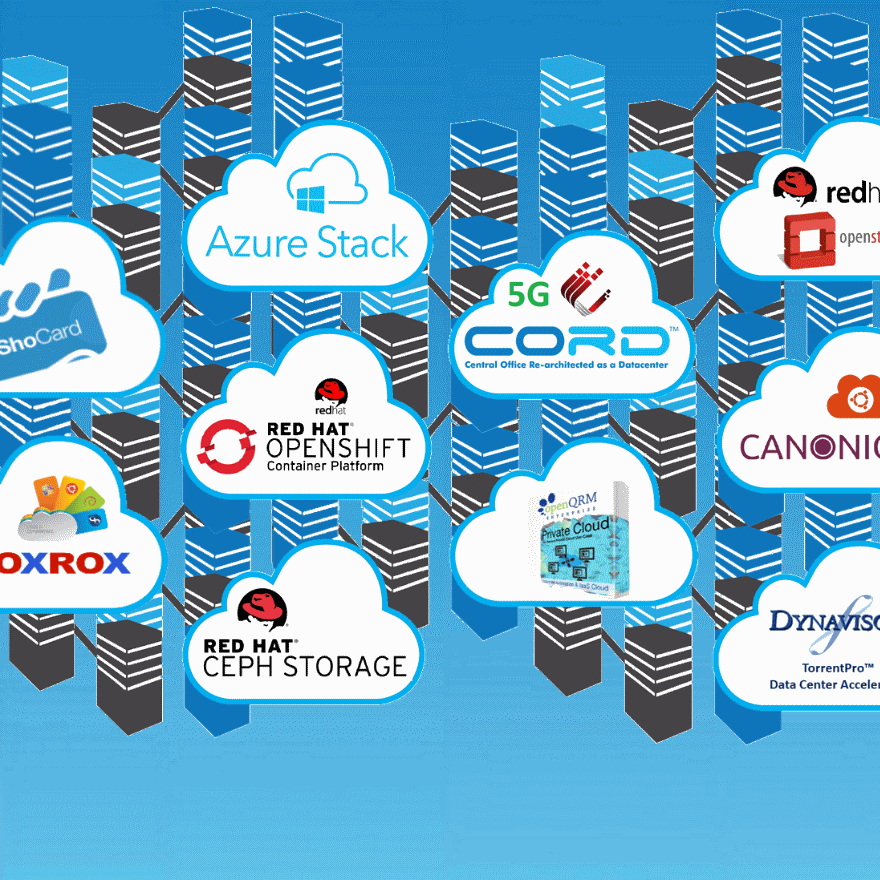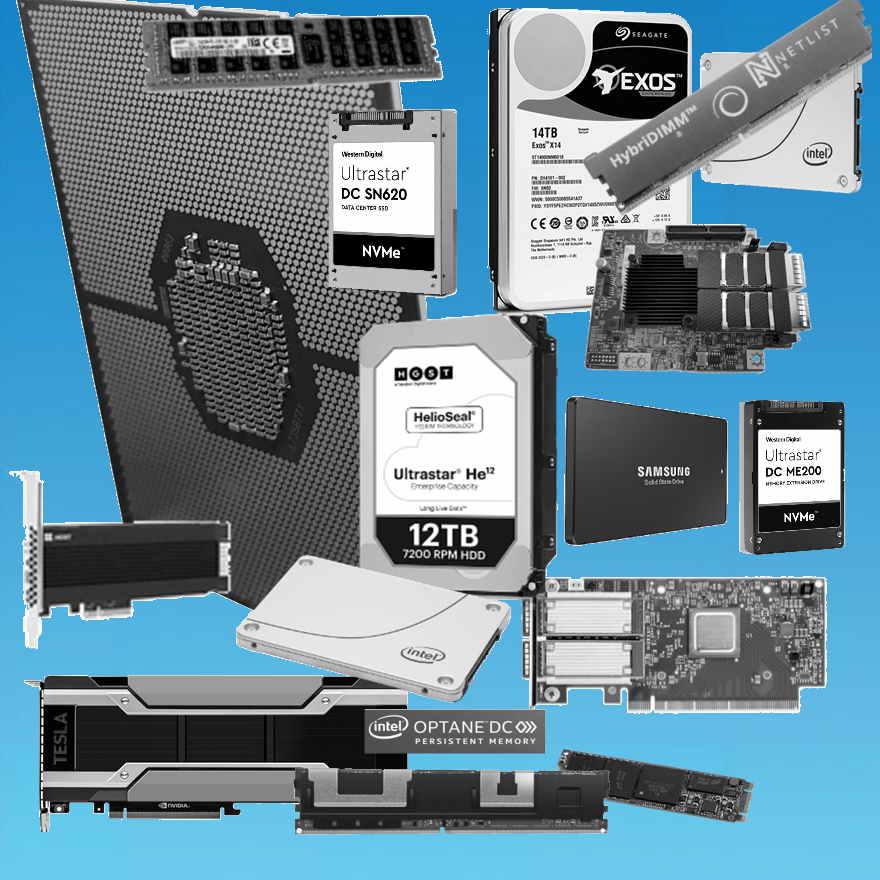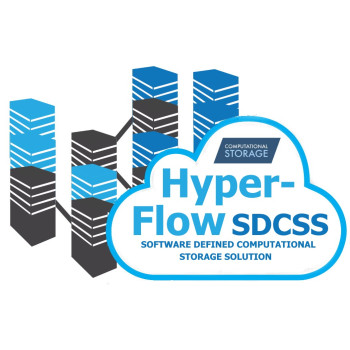
HyperFlow SDCSSHyperFlow is a software-defined computational storage solution (SDCSS) that has been engineered to redefine performance, price, versatility, scalability and availability expectations in the modern storage
HyperFlow SDCSS
HyperFlow is a software-defined computational storage solution (SDCSS) that has been engineered to redefine performance, price, versatility, scalability and availability expectations in the modern storage solutions marketplace.
Hyperscalers and ScaleFlux have partnered as hardware providers to co-develop and qualify a high-performance computational storage solution (CSS) against the industry standard Ceph software defined storage (SDS) platform.
The resultant HyperFlow SDCSS platform delivers all of the well-known benefits of Ceph in the context of blazingly fast (NVMe) Computational Storage containing high performance storage processors able to optimize dynamically for both performance and capacity.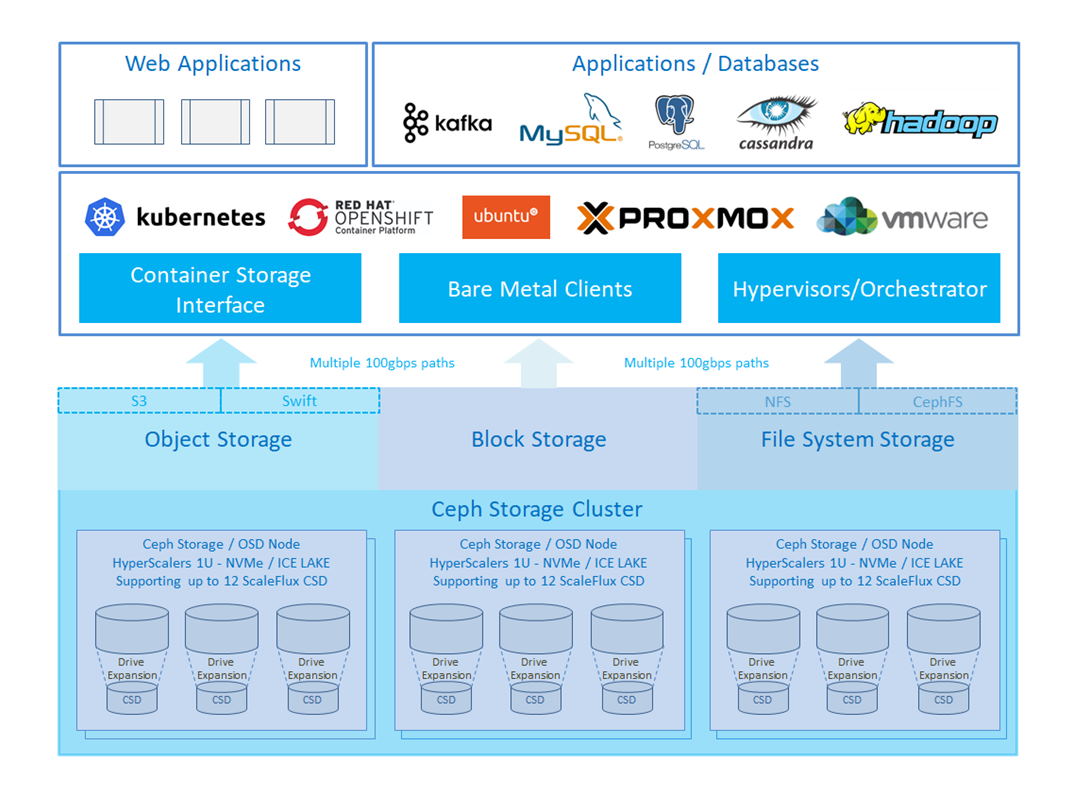
Hyperscalers have developed this platform with an all-flash Non-Volatile Memory express (NVMe) Ceph storage cluster using CSD (Computational Storage Drive) technology from Scaleflux in 1U servers provided by Hyperscalers.
This unique combination of well-known, trusted hardware elements and the Ceph platform is the perfect combination for delivery of highly available, mature, and flexible Block, File and/or Object-storage services provided by Ceph.
Computational storage drive expansion presents a larger drive capacity to the operating system than the physical size of the drive itself. This ground breaking technology enables customers to realize cost saving multiples typically of 2.5 to 3.5 times (and potentially beyond) for NVMe class drives. This in turn brings the price point of NVMe class drives much closer to the cost per terabyte normally associated with hard disk drive (HDD) equipment.
HyperFlow SDCSS is highly configurable with our minimum base implementation able to support 40GBps-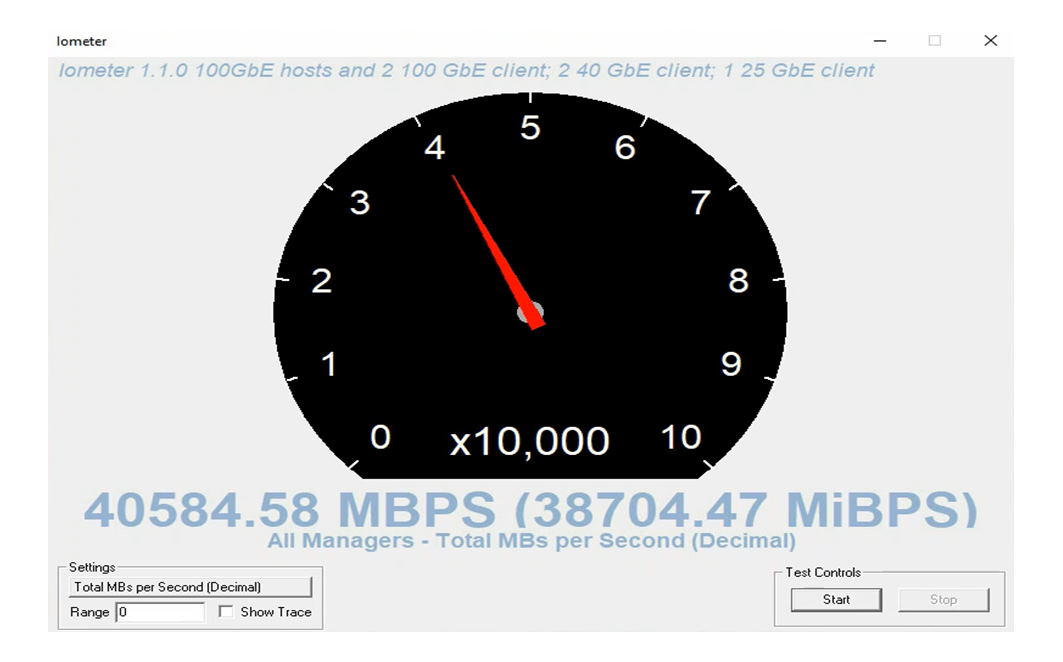 80GBps cluster throughput against 691.2 TB total capacity, all in 3RU. If density is a requirement, this base design can easily double in capacity or throughput (or both) with no additional server hardware required. Conversely, capacity and/or throughput can be expanded across additional cluster nodes for greater availability – the choice is yours.
80GBps cluster throughput against 691.2 TB total capacity, all in 3RU. If density is a requirement, this base design can easily double in capacity or throughput (or both) with no additional server hardware required. Conversely, capacity and/or throughput can be expanded across additional cluster nodes for greater availability – the choice is yours.
HyperFlow is a fast, reliable, low cost and turnkey SDCSS platform that has been rigorously qualified through Hyperscalers’ Hardware Appliance Design process to ensure full-stack compatibility across the Ceph, operating system and device driver layers.
Taken in conjunction with Hyperscalers trusted ability to support enterprise class customers across multiple localities, HyperFlow SDCSS should be viewed as a highly engineered, industry leading storage platform solution that can be trusted to support storage requirements across any customer context.
SDCSS provides scalable and reliable data storage for object, block and file storage, without the need for the investment in expensive hardware.
Intelligent software integration
The technology architecture employed within HyperFlow SDCSS provides a flexible and adaptable foundation for integration with a broad range of services, applications and cloud technologies. From web-scale content repositories to machine learning and artificial intelligence you can gain detailed insights into your data and leverage it to improve business outcomes. Use inbuilt HyperFlow SDCSS protocols to work with block, object, and file storage, or create your own interface using the LIBRADOS API.
Scalable storage
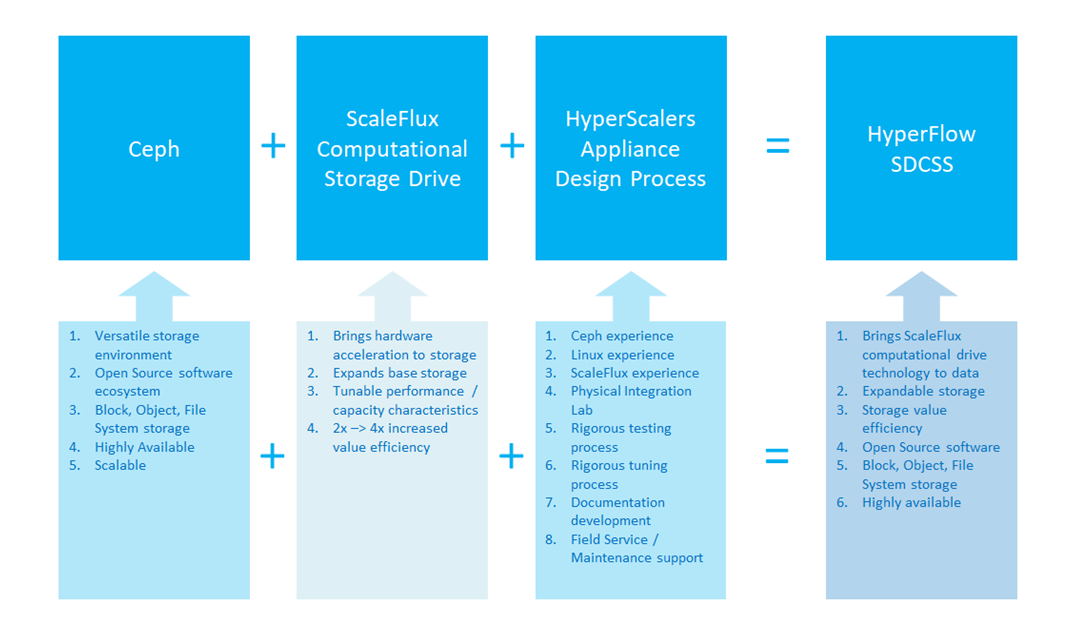
With HyperFlow SDCSS there is no limit to your data growth. As a virtualised storage system HyperFlow SDCSS can scale as you require without the confines of traditional hardware storage. HyperFlow SDCSS is designed to ensure the reliability, performance and availability of your data - even alongside exponential growth.
Undoubted reliability
Advanced algorithms, intelligent object storage daemons and automated self-management capabilities enable HyperFlow SDCSS to provide businesses with high reliability and quick, detailed insights into cluster health. It is well known that manual data management processes can result in operational delays and overlooked cluster issues. In order to mitigate these problems, HyperFlow SDCSS automates round-the-clock monitoring, back-ups and data protection.
Business continuity
There are few businesses that can run smoothly without access to key operational data. Regardless of whether the business context is a customer bookings platform or an automated logistical system (for example), downtime always reduces customer confidence and can have a significant impact on revenue generation. HyperFlow SDCSS will help you to guarantee business continuity by enabling you to implement finely tuned and automated data redundancy across devices, racks and geographic locations.
Controlled investment
In contrast to the hefty payments and costly infrastructure requirements imposed by some storage vendors, HyperFlow SDCSS will run on your existing off-the-shelf hardware. This can make transition to HyperFlow SDCSS far more cost-effective than when dealing with any of the incumbent storage marketplace alternatives. Additionally, by balancing your data replication across a cluster, it becomes easy to monitor cluster capacity and limit any purchasing of additional storage only to the circumstances where it is actually needed.
Choose the hardware that matches your needs
HyperFlow SDCSS provides unparalleled flexibility in your choice of hardware. In fact it is able to run on just about anything. By freeing organisations from committing to a single hardware vendor, HyperFlow SDCSS supports constant adaptation and innovation, with all hardware components able to be swapped out as needs change. This enables you to provide access to Object, Block or File storage from one unified cluster, while decoupling your data management architecture from any specific hardware elements you may choose to use.
Remove bottlenecks
Bottlenecks that seemed acceptable in smaller deployments may rapidly become costly and unwieldy at scale. As a distributed storage system, HyperFlow SDCSS provides seamless data retrieval by enabling client applications to calculate the location of data within a cluster directly. This capability removes the need for a traditional metadata server. By supporting a direct path for update and retrieval, network traffic is reduced and a critical single point of failure is negated, providing smoother and more reliable service to you and your customers.
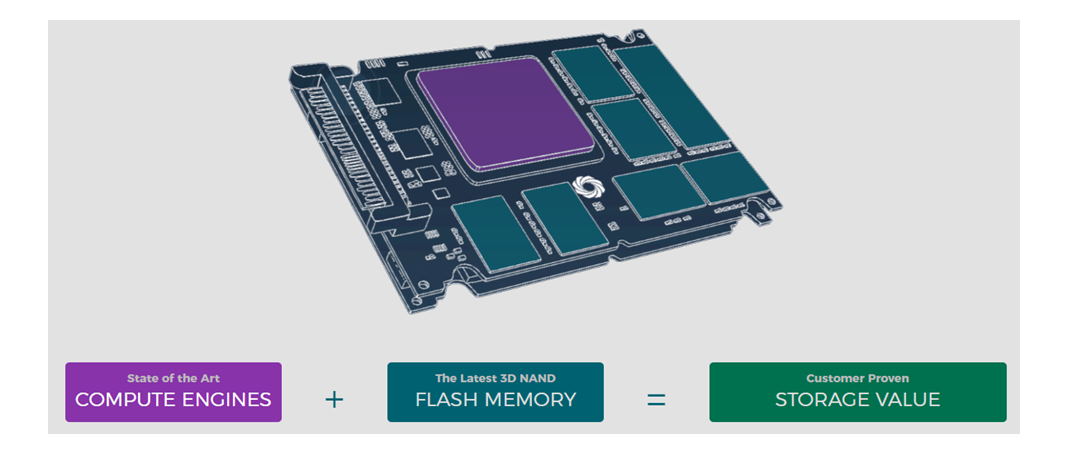
A solution you can rely on long-term
Cephs’ global community of industry leading developers ensure that Ceph never falls behind the storage technology curve. There are more experts reviewing the Ceph code base on a daily basis than would ever occur for a proprietary solution. This results in quick response to evolving security requirements and new innovations in storage technology. Cephs’ core philosophy and open-source model ensures continued development and practicality. Ceph is built to address the needs of its users, and it continues to offer additional features and efficiencies with every new release.
Built to scale
HyperFlow SDCSS offers high density storage, scalable to petabyte levels within a smaller footprint (minimum 3 x 1U ). With typical cost reduction of 250% per TB of NVMe, HyperFlow SDCSS is a fraction of the traditional costs associated with NVMe class storage.
Fast
It is possible to deploy and scale a POC / production ready storage server in no more than few hours . With ScaleFlux NVMe Computational Storage, HyperFlow SDCSS achieves throughput of 40 GB/s - 80GB/s (with dual 100G Network Interface Cards per node).
Intuitive Management Interface
HyperFlow SDCSS provides an intuitive and easy to use management user interface / dashboard that enables you to comprehensively manage and monitor all aspects of your environment including:
• Monitoring & audit of cluster logs,
• Addition, configuration and removal of hosts, object storage drives, monitors and managers,
• Creation and configuration of storage pools (with replica/erasure coding) to support Object, Block and File system storage,
• Creation and management of storage volumes and images,
• Creation and management of image mirroring,
• Create and management of object buckets.
The following screenshot of the Ceph management interface depicts high level Ceph environment status including cluster health, number of Ceph system elements and key capacity and performance metrics:
High Availability and Low risk
Courtesy of the highly evolved Ceph architecture, HyperFlow SDCSS offers superior reliability and availability. This in turn allows storage providers to deliver storage services with minimal downtime. HyperFlow SDCSS mitigates risks and protects data through replication, mirroring, and erasure coding.
Storage solution for every application
HyperFlow SDCSS offers block, object, and file system storage on demand. This enables it to dynamically serve any combination of hypervisor, container, web/monolithic application and direct clients.
HyperFlow SDCSS Storage Types
Object storage
Object storage is a data storage architecture that manages data as individual binary objects. Each object includes data, metadata (providing reference information on the data) and a unique ID. Object storage allows customers to connect web applications to uniquely identified storage objects acting as storage points, and from there to store any form of unstructured data within them. In HyperFlow SDCSS, object storage is deployed in the form S3 / Swift buckets which can either be attached to by internal consumers or published as a public or private cloud accessible item.
File System storage
File System (FS) storage is a data storage structure in which data is stored and maintained as files within folders. This approach will be familiar to any desktop computer user navigating their file system folder structure via Explorer (Windows) or the Finder (MacOS). The File System storage structure provides readability and convenience. File System storage under HyperFlow SDCSS can be deployed as a network file system (NFS) or as CephFS
Block storage
An abstract form of File System storage is known as Block storage. Block storage supports storage of structured data to be used by VMs, applications and end users. Block devices provided by HyperFlow SDCSS can be attached to clients as a RADOS block device (RBD) or through iSCSI.
Support
Hyperscalers offers full hardware and software support to HyperFlow SDCSS customers across multiple geographic localities. Depending on severity , analysis of any specific issue can range between a few business hours to three business days.
Comparison
The following table illustrates key comparison metrics between HyperFlow SDCSS and other storage system products:
Infrastructure
The following figure shows how the HyperFlow SDCSS architecture relates to some example contemporary storage use-cases, and therefore how it can empower HyperFlow users to store, manage and utilise their data:
HyperFlow Software Defined Computational Storage Solution generic structure
The requirements of this architecture are mentioned at Page 11 of the HyperFlow SDCSS Reference Guide. Interconnect between HyperFlow storage elements and any applications/clients depends on various factors - please refer to the HyperFlow SDCSS Reference Guide to understand specific technical requirements for storage interconnect.

 80GBps cluster throughput against 691.2 TB total capacity, all in 3RU. If density is a requirement, this base design can easily double in capacity or throughput (or both) with no additional server hardware required. Conversely, capacity and/or throughput can be expanded across additional cluster nodes for greater availability – the choice is yours.
80GBps cluster throughput against 691.2 TB total capacity, all in 3RU. If density is a requirement, this base design can easily double in capacity or throughput (or both) with no additional server hardware required. Conversely, capacity and/or throughput can be expanded across additional cluster nodes for greater availability – the choice is yours.
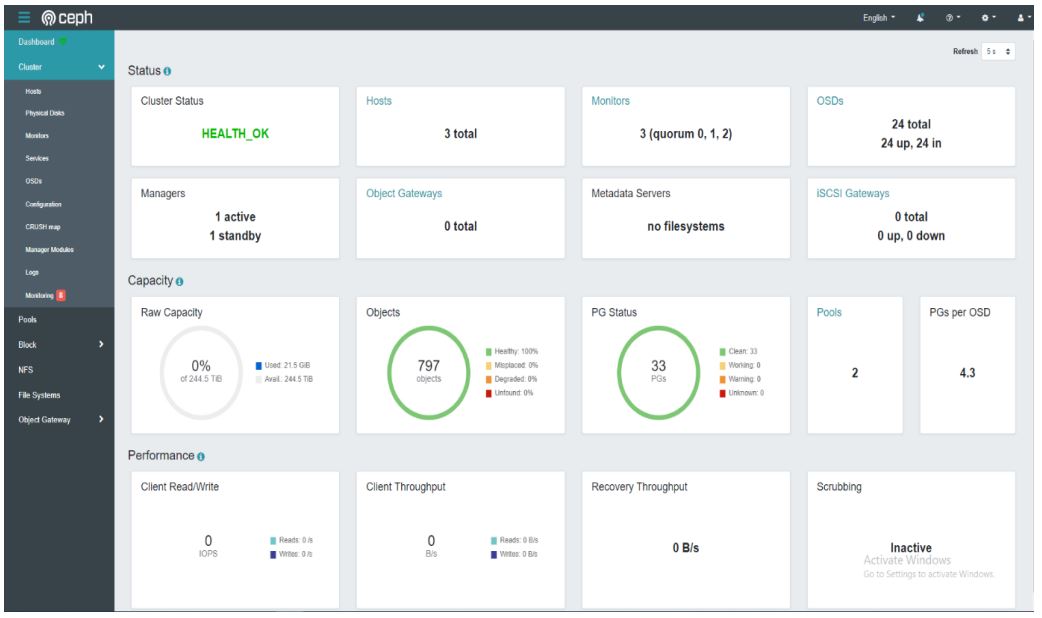
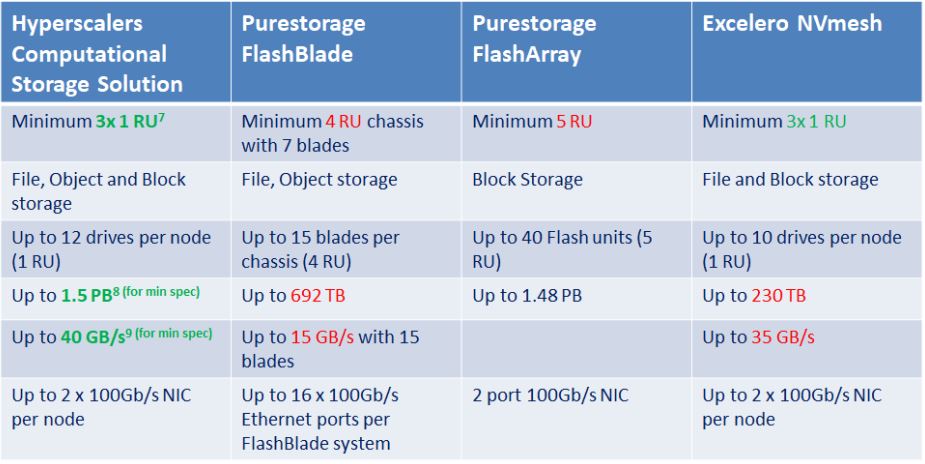

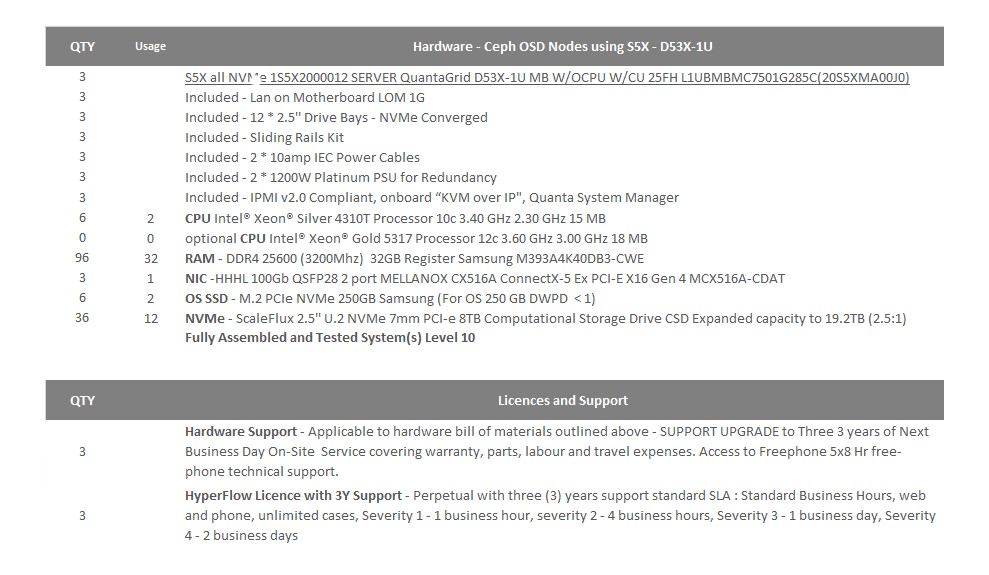




 AUS site
AUS site






